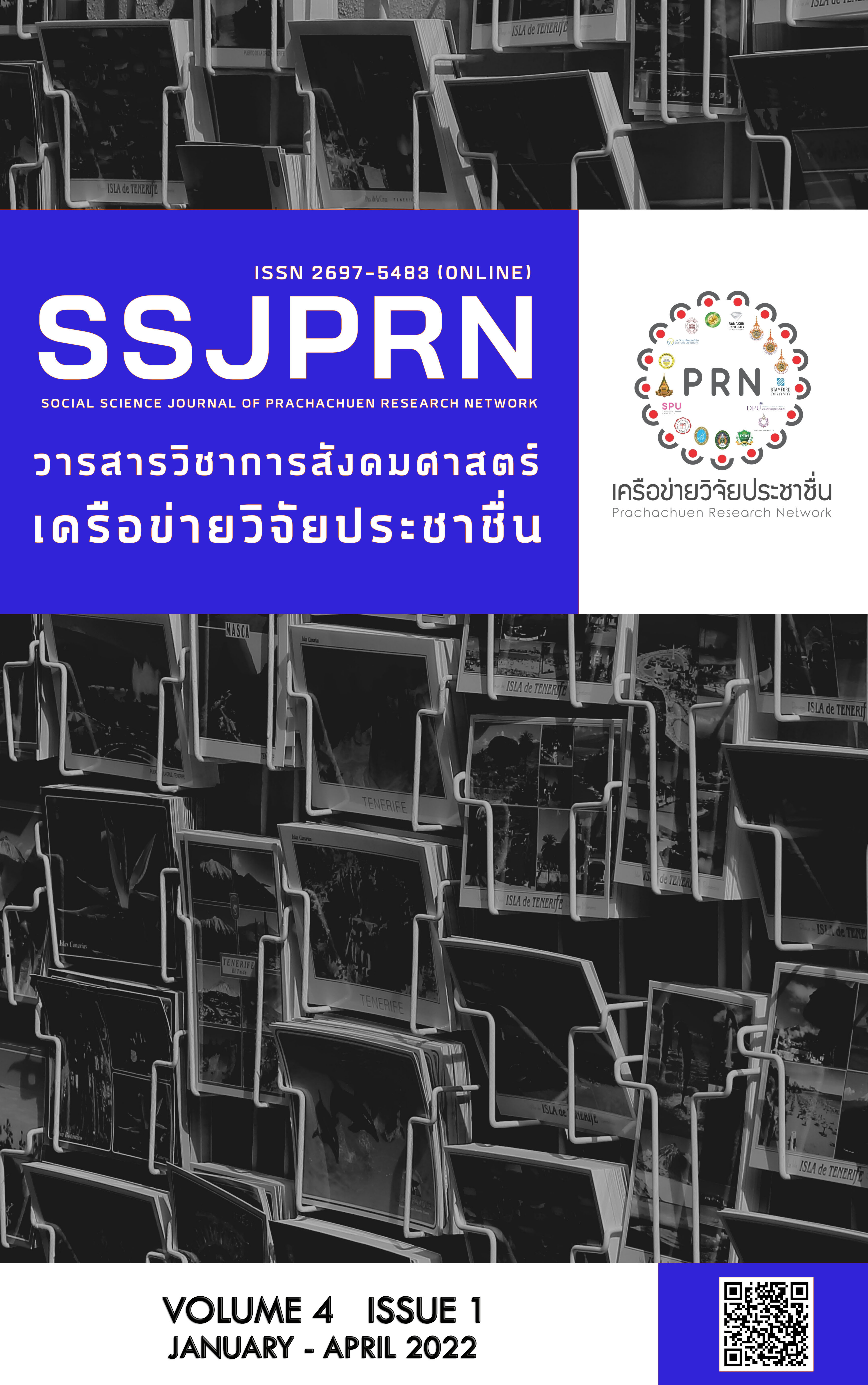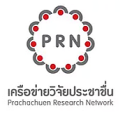องค์ประกอบภาวะผู้นำที่มีผลต่อความพึงพอใจและความผูกพันในการทำงาน
คำสำคัญ:
ภาวะผู้นำ , ความพึงพอใจในงาน , ความผูกพันในการทำงานบทคัดย่อ
การวิจัยครั้งนี้มีวัตถุประสงค์เพื่อศึกษาลักษณะเด่นหรือองค์ประกอบของรูปแบบภาวะผู้นำที่พนักงานหรือผู้ตามรับรู้จากพฤติกรรมของหัวหน้างานที่ส่งผลต่อความพึงพอใจในงาน และความผูกพันในการทำงานของพนักงาน การวิจัยนี้ได้ใช้กลุ่มตัวอย่างที่เป็นพนักงานการไฟฟ้านครหลวง และเครื่องมือที่ใช้ในการวิจัยครั้งนี้คือแบบสอบถาม โดยทำการเก็บรวบรวมข้อมูลพนักงานและได้แบบสอบถามที่สมบูรณ์จำนวนทั้งสิ้น 379 ฉบับเพื่อนำมาวิเคราะห์สถิติพรรณนาโดยใช้การแจกแจงความถี่ ค่าร้อยละ ค่าเฉลี่ย ค่าส่วนเบี่ยงเบนมาตรฐาน รวมถึงใช้การวิเคราะห์การถดถอยเชิงพหุคูณเพื่อทดสอบสมมติฐาน
ผลการวิจัยพบว่า องค์ประกอบของรูปแบบภาวะผู้นำมีผลต่อความพึงพอใจและความผูกพันในงานของพนักงานอย่างมีนัยสำคัญทางสถิติ โดยในส่วนความพึงพอใจ งานวิจัยชิ้นนี้พบว่าด้านการสร้างแรงบันดาลใจมีอิทธิพลเชิงบวกต่อความพึงพอใจในงานของผู้ตาม และด้านการปล่อยตามสบายมีอิทธิพลเชิงลบต่อความพึงพอใจในงาน ในด้านความผูกพัน งานวิจัยชิ้นนี้พบว่าการสร้างแรงบันดาลใจมีอิทธิพลเชิงบวกต่อความผูกพันในการทำงาน แต่ในทางตรงกันข้ามงานวิจัยชิ้นนี้กลับพบว่าผู้นำที่แสดงออกด้านบริหารวางเฉยเชิงรุกและผู้นำที่มีลักษณะแบบปล่อยตามสบายมีอิทธิพลเชิงลบต่อความผูกพันในงาน
เอกสารอ้างอิง
Antonakis, J., & House, R. J. (2013). The full-range leadership theory: The way forward. In Transformational and charismatic leadership: The road ahead 10th anniversary edition: Emerald Group Publishing Limited.
Bakker, A. B., Demerouti, E., & Lieke, L. (2012). Work engagement, performance, and active learning: The role of conscientiousness. Journal of Vocational Behavior, 80(2), 555-564.
Bass, B. M. (1985). Leadership and performance beyond expectations. New York: Free Press.
Bass, B. M., & Avolio, B. J. (1996). Multifactor leadership questionnaire. Palo Alto: Consulting Psychologists Press.
Bennis, W. G. (1959). Leadership theory and administrative behavior: The problem of authority. Administrative Science Quarterly, 259-301.
Bovee, C. L. (1993). Management. New York: McGraw-Hall: Inc.
Breevaart, K., Bakker, A., Hetland, J., Demerouti, E., Olsen, O. K., & Espevik, R. (2014). Daily transactional and transformational leadership and daily employee engagement. Journal of Occupational and Organizational Psychology, 87(1), 138-157.
Burns, J. (1978). Leadership. New York: Harper and Row.
Cenkci, A. T., & Özçelik, G. (2015). Leadership Styles and Subordinate Work Engagement: The Moderating Impact of Leader Gender. Global Business & Management Research, 7(4), 8-20.
Darshan, G. (2011). Effects of transformational leadership on subordinate job satisfaction in leather companies in Ethiopia. International Journal of Business Management and Economic Research, 2(5), 284-296.
Haddad, S., Badran, O., & Daood, A. (2018). The impact of transformational leadership style on employees’ job satisfaction. International Journal of Pure and Applied Mathematics, 119(18), 887-900.
Hamidifar, F. (2010). A study of the relationship between leadership styles and employee job satisfaction at IAU in Tehran, Iran. Au-GSB e-Journal, 3(1), 45-58.
Hassan, S., Jati, M. K. K., Majid, M., & Ahman, Z. (2019). The role of transformational leadership towards MAHB. International Journal of Accounting, Finance and Business, 4(17), 1-7.
Hinkin, T. R., & Schriesheim, C. A. (2008). An examination of" nonleadership": from laissez-faire leadership to leader reward omission and punishment omission. Journal of applied psychology, 93(6), 1234.
House, R. J. (1996). Path-goal theory of leadership: Lessons, legacy, and a reformulated theory. The Leadership Quarterly, 7(3), 323-352.
Humphreys, J. H. (2005). Contextual implications for transformational and servant leadership: A historical investigation. Management decision, 43(10), 1410-1431.
Joshi, B. S. (2019). Leadership Style Paradigm Shift in Hospital Industry: Need of the Day, in Comparison with Hospitality Industry. Journal of Health Management, 21(1), 141-153.
Judge, T. A., & Piccolo, R. F. (2004). Transformational and transactional leadership: a meta-analytic test of their relative validity. Journal of applied psychology, 89(5), 755.
Klein, A. S., Wallis, J., & Cooke, R. A. (2013). The impact of leadership styles on organizational culture and firm effectiveness: An empirical study. Journal of Management & Organization, 19(3), 241-254.
Knights, J., Grant, D., & Young, G. (2020). Developing 21st century leaders, a complete new process: We call them Transpersonal Leaders. Journal of Work-Applied Management, 12(1), 6-21.
Lewin, K., Lippitt, R., & White, R. K. (1939). Patterns of aggressive behavior in experimentally created “social climates”. The Journal of social psychology, 10(2), 269-299.
Long, C. S., Yusof, W. M. M., Kowang, T. O., & Heng, L. H. (2014). The impact of transformational leadership style on job satisfaction. World Applied Sciences Journal, 29(1), 117-124.
Malik, W. U., Javed, M., & Hassan, S. T. (2017). Influence of transformational leadership components on job satisfaction and organizational commitment. Pakistan Journal of Commerce and Social Sciences, 11(1), 147-166.
Manning, J. (2016). The influence of nurse manager leadership style on staff nurse work engagement. JONA: The Journal of Nursing Administration, 46(9), 438-443.
Markiz, Y., Margono, S., Wirawan, I. D., & Ainur, R. (2017). The influences of leadership styles, organizational communication, and job satisfaction toward employees’ job performance in doing construction jobs: a study on three construction companies in Jakarta. Russian Journal of Agricultural and Socio-Economic Sciences, 65(5), 168-181.
Oino, I., & Asghar, S. (2018). Leadership Styles and Job Satisfaction. Market Forces, Journal of Management, Business and Economics, 13(1), 1-13.
Ramlall, S. (2004). A review of employee motivation theories and their implications for employee retention within organizations. Journal of american academy of business, 5(1/2), 52-63.
Rowold, J., & Borgmann, L. (2014). Interpersonal affect and the assessment of and interrelationship between leadership constructs. Leadership, 10(3), 308-325.
Schaufeli, W. B., Salanova, M., González-Romá, V., & Bakker, A. B. (2002). The measurement of engagement and burnout: A two sample confirmatory factor analytic approach. Journal of Happiness Studies, 3(1), 71-92.
Schermerhorn, J. R., & Hunt, J. (2005). Organizational Behavior. New Jersey: John Wiley & Sons, Inc.
Sledge, S., Miles, A. K., & Coppage, S. (2008). What role does culture play? A look at motivation and job satisfaction among hotel workers in Brazil. The International Journal of Human Resource Management, 19(9), 1667-1682.
Spector, P. E. (1997). Job satisfaction: Application, assessment, causes, and consequences. Sage.
Strom, D. L., Sears, K. L., & Kelly, K. M. (2014). Work engagement: The roles of organizational justice and leadership style in predicting engagement among employees. Journal of leadership & organizational studies, 21(1), 71-82.
Sunarsi, D., & Erlangga, A. (2020). The Effect of Leadership Style and Work Environment on the Performance of Stationary Pump Operators in the Water Resources Office of West Jakarta City Administration. International Journal of Advances in Social and Economics, 2(3), 1-13.
Susskind, A. M., Borchgrevink, C. P., Kacmar, K. M., & Brymer, R. A. (2000). Customer service employees’ behavioral intentions and attitudes: An examination of construct validity and a path model. International Journal of Hospitality Management, 19(1), 53-77.
ดาวน์โหลด
เผยแพร่แล้ว
รูปแบบการอ้างอิง
ฉบับ
ประเภทบทความ
สัญญาอนุญาต
ลิขสิทธิ์ (c) 2022 วารสารวิชาการสังคมศาสตร์เครือข่ายวิจัยประชาชื่น

อนุญาตภายใต้เงื่อนไข Creative Commons Attribution-NonCommercial-NoDerivatives 4.0 International License.
บทความที่ได้รับการตีพิมพ์เป็นลิขสิทธิ์ของวารสารวิชาการสังคมศาสตร์เครือข่ายวิจัยประชาชื่น







